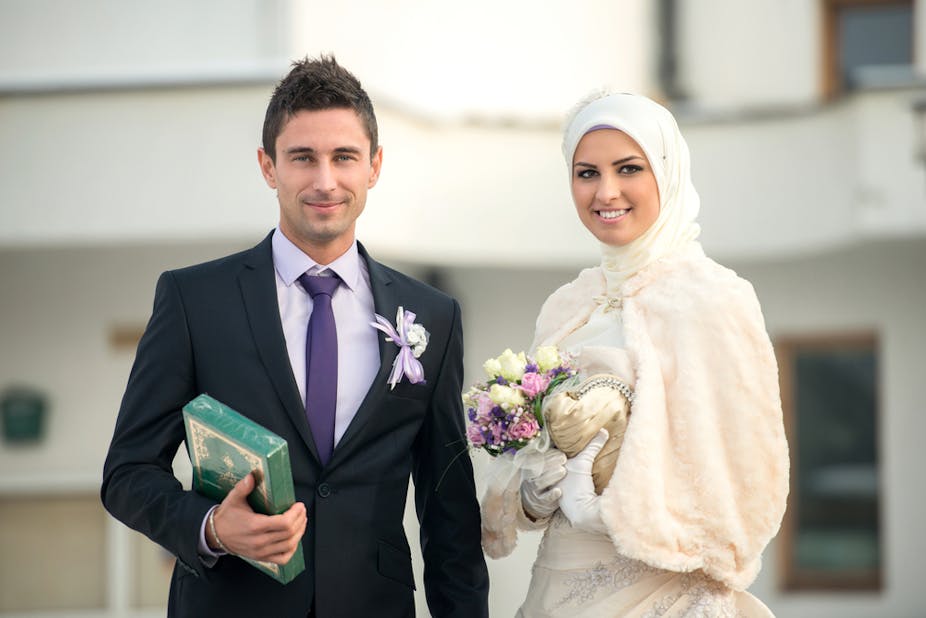While deciding that former Mormon John Hyde could not seek a divorce on the grounds of adultery in English law in 1866, Lord Penzance held that marriage was “the voluntary union for life of one man and one woman to the exclusion of all others.”
Critics exposed this first legal definition of marriage as unrealistic even then. After all, divorce decrees were being granted before this case, so marriage wasn’t necessarily “lifelong”, and the meaning of “voluntary” in this context was as elusive in 1866 as it is today. With the advent of same-sex marriage, the idea of “one man and one woman” is also outdated. So what remains?

Marriage “to the exclusion of all others” is the only element of Lord Penzance’s statement which still holds fast. In English law, unions between more than two parties aren’t legal. And these days, it’s mostly women who suffer from the lack of legal recognition of polygamous marriages, and yet ironically, it’s gender equality that is commonly cited as a reason for denying such recognition.
Inferior and subordinating?
The Matrimonial Causes Act 1973 provides that if an English-domiciled individual enters into a polygamous marriage, it is void. Polygamous spouses and their children are refused entry into the UK to be with a partner who is already resident or has been granted entrance, with a view to preserving monogamy and gender equality.
For example, in the 1995 case of Hasna Begum, a polygamous wife was refused entry into the UK to join her husband. She was forced to live as an unmarried woman in Bangladesh, supported by her brother, despite having official spousal recognition in that country. This led to further suffering as she was unable to enjoy the same lifestyle as her husband’s first wife in the UK. The court assumed that as a polygamous wife she would be an automatic burden on the state, and she was treated as inferior because her marriage was compared to the monogamous ideal and found wanting.
Similarly, in refusing entry to the child of a man resident in the UK and his third wife, it was noted in a 2012 case that “the discouragement of such marriages … is a legitimate aim in pursuit of morals and … gender equality”.
Polygamous marriages are often characterised as failing to uphold gender equality. But is this limited to polygamy? We know that gender inequality can exist in any marriage, regardless of its form. The real issue isn’t polygamy but the patriarchal behaviour of the parties to it.
Monogamy does not guarantee gender equality and to suggest otherwise is unfair because any gender-based harm that a monogamous wife suffers is devalued. By contrast, a polygamous wife who feels supported and empowered in her marriage is left feeling that no explanation will change the perception that her relationship is inferior. One woman I interviewed as part of my research, who was about to become a polygamous wife responded to the charge of gender inequality:
That’s her being oppressed by people saying, ‘oh you’re not standing up for feminism’. They are talking about women being oppressed but they are oppressing women themselves.
It’s hard, therefore, to see how the objective of gender equality is advanced when the law negatively affects the very women it’s meant to benefit.
One size fits all?

So, if the problem isn’t polygamy itself, should it remain excluded from legal understandings of marriage? Getting Married, a recent scoping paper published by the Law Commission, shows that this area is ripe for reform. Marriage has already been broadened and now bears little relation to the Hyde definition but it has increasingly become apparent that the law needs to take an even more nuanced approach. We need to question the perceptions that leave women in an inferior and subordinated position caused by prevailing legal responses and attitudes.
If gender equality is to have real meaning, it should empower, not marginalise women, regardless of the type of marriage they choose to be in. Only once this has been addressed can moves be made towards a more inclusive understanding of marriage.

